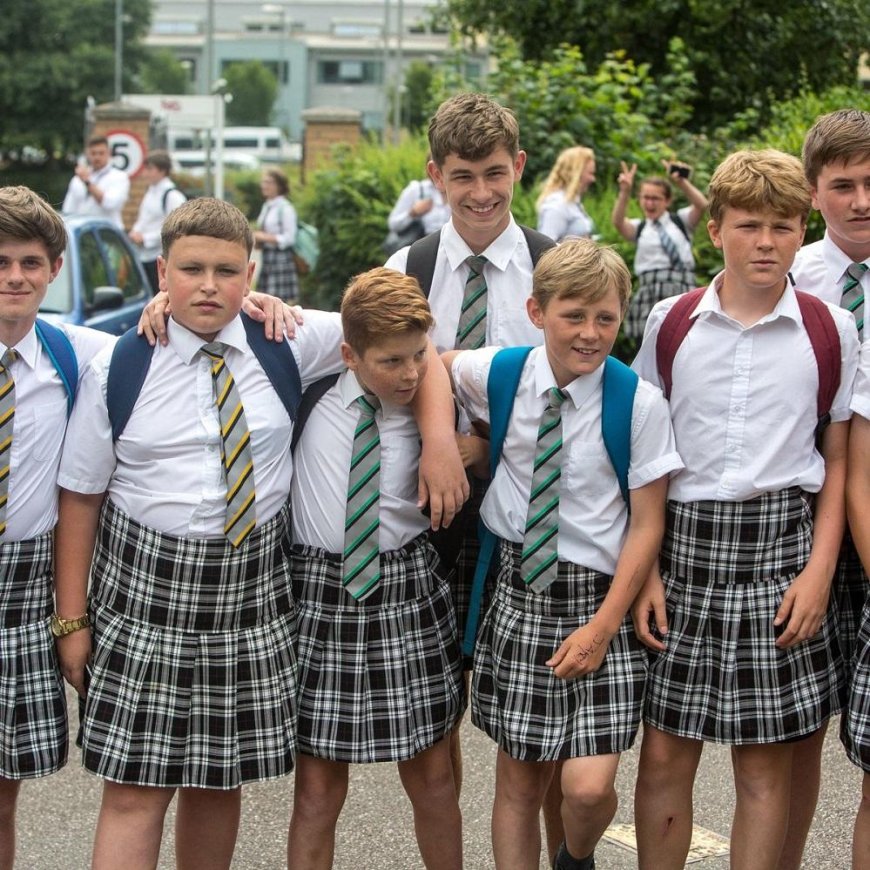What should I wear in school?
the teaching profession? After all, there are no rules or regulations. But maybe a dress code. What should I wear in school.

The rumor persists that teachers are mostly badly dressed. This is probably due to the fact that we remember the strangely dressed teachers from our own school days rather than those with inconspicuous outfits. But which clothes go well with the teaching profession? After all, there are no rules or regulations. But maybe a dress code. What should I wear in school.
Even more regulations, you may now think, after all, the teaching profession today is already complicated enough without dress codes! That's true, but one shouldn't underestimate the effect clothing has. And how your own outfit can help to get recognition from students and colleagues and to be perceived as confident and authentic. Because not only figure, hairstyle or voice shape the image that others have of us, clothing also contributes to this to a not inconsiderable extent. On the one hand, we say how we see ourselves, on the other hand, what we think of our counterpart, with what respect we treat them. And this is especially important in professions that are determined by working with other people.
Three simple rules of dress
It's actually not that difficult to find the right outfit for school:
- You should wear something different to school than you do at home on the sofa, where you might be indulging in sweatpants and a hoodie. This "feel-good clothing" is taboo in school.
- In addition, there are a few rules that should be taken for granted (not only for teachers): Do not wear broken, dirty or worn clothes in your workplace.
- The other extreme is also not recommended: suit and suit with tie. Not only that both outfits are simply not suitable to feel comfortable in them for a full day of school; Clothing that is more likely to be expected at a board meeting creates unnecessary distance at school, and in the worst case even creates accusations of arrogance. On special dates, such as the farewell to school leavers, the clothing can and should be a bit more festive. This also applies to other special situations such as oral exams. With a little more elegance on this day you underline the special thing about this event and show your students respect. The trick is to achieve a successful balancing act between chic, official, appropriate, comfortable and practical.
From no-go to standard
First of all, the no-go™s are decisive. This includes transparent fabrics, cropped T-shirts and spaghetti straps. Likewise, T-shirts or sweaters with logos, slogans or symbols. Male colleagues should instead choose a polo shirt with a collar when in doubt. And the hoodie belongs more to the category of school clothes.
You can't go wrong with shirts and blouses, however, with a few restrictions: wide casual shirts are just as unsuitable as skin-tight stretch blouses. Combined with jeans, trousers or a skirt, blouses and shirts are almost standard equipment. After all, jeans have long been an accepted item of clothing for everyday school life, unless they are badly faded and tattered or are too tight. And skirts and dresses should neither be too tight nor too short.
Must Read: Study leave and rotation leave “ what are they and which one is right for you?
Jackets or blazers can also be combined well with jeans, although the feel-good factor should not be underestimated here. Because a slightly stretchy jacket can become quite uncomfortable during a long day at school. A good alternative: the cardigan - both for teachers and teachers, at best it can even be worn as a blazer replacement. However, matted or very fluffy jackets are a no-go.
Show me your shoes...
Do not underestimate the effect of your shoes! The lace-up shoe is still an all-rounder for men. A classic you can't go wrong with. It might get more comfortable with sneakers. Also not a problem if you don't combine them too sportily. Women have a larger selection, for them even sandals - rather not recommended for men - and shoes with heels are unproblematic. However, you should wear high heels and platform soles on other occasions than at school.
How much make-up can be?
How long can a beard be and what make-up is appropriate? When it comes to beards, one thing is clear: they should be well-groomed. Of course, this also applies to hairstyles. And when it comes to make-up, less is more. Heavily made-up "Smokey eyes" and glued-on artificial nails, like high heels, are better saved for other occasions.
Red, blue or gray?
But what about the clothes colors? In fact, the effect of colors shouldn't be underestimated. Many experts have thought about it. Accordingly, the color blue emphasizes authority and control, while yellow appears dubious and reckless, but can also be stimulating. Violet signals a high level of self-confidence and an individual character, and while black creates respect, it can also act as a barrier to communication and too distant. The color orange rarely comes off well, it is associated with unprofessionalism. Gray, on the other hand, is usually classified as professional, balanced and unobtrusive.
Your own personality
Apart from all color and clothing recommendations, there is one thing you shouldn't forget: you know your favorite colors and you usually also know which cuts suit you. So in the future, only appearing gray on gray because it looks professional but has little to do with you is hardly ideal. Rather, it's a mix of inconspicuous or neutral colors and those that are important to you. And when it comes to style, you should trust your taste, apart from the no-go™s mentioned. After all, the choice of clothes and colors is part of your personality. And students can feel very clearly when your choice of clothing underlines your personality or does not suit you at all and appears fancy.
